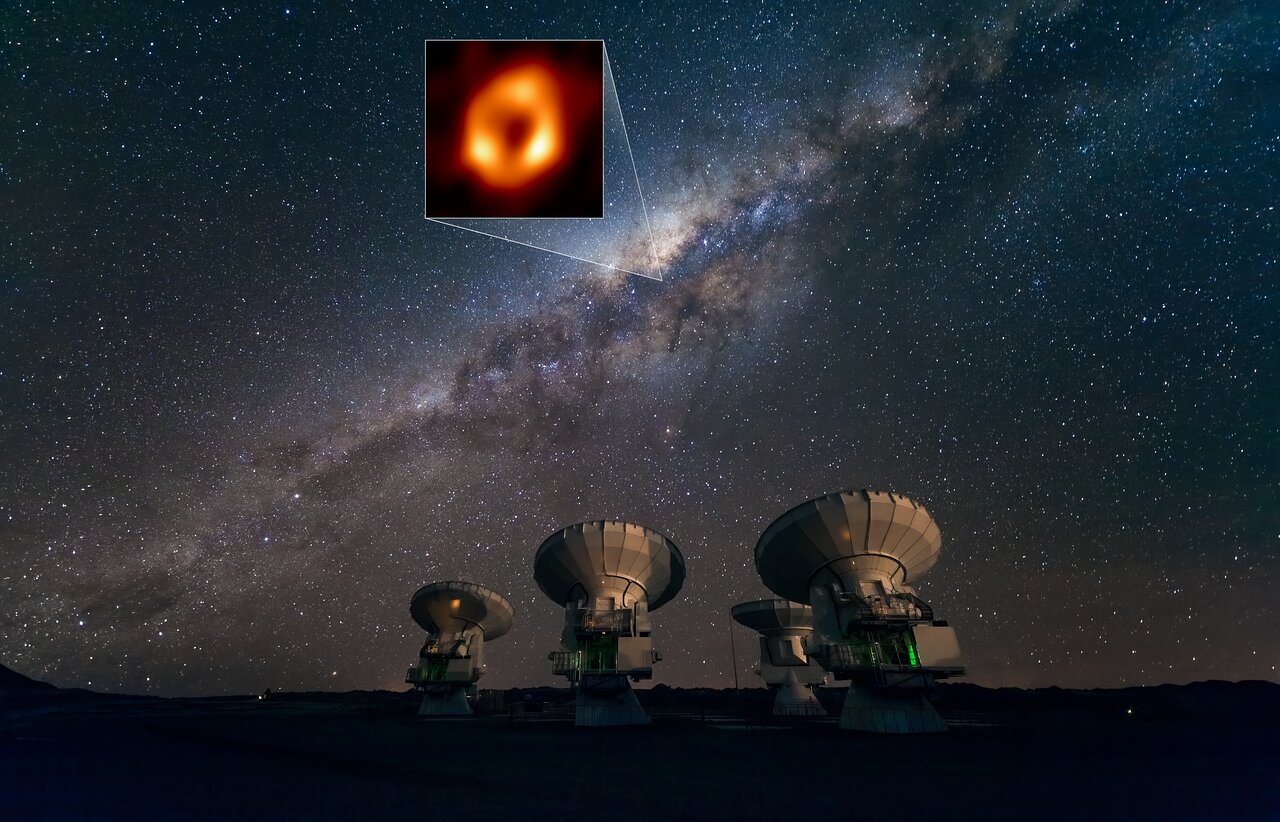The Theory of General Relativity (GR), proposed by Einstein over a century ago, remains one of the most well-known scientific postulates of all time. This theory, which explains how spacetime curvature is altered in the presence of massive objects, remains the cornerstone of our most widely-accepted cosmological models. This should come as no surprise since GR has been verified nine ways from Sunday and under the most extreme conditions imaginable. In particular, scientists have mounted several observation campaigns to test GR using Sagittarius A* (Sgr A*), the supermassive black hole at the center of the Milky Way.
Last year, the Event Horizon Telescope (EHT) – an international consortium of astronomers and observatories – announced they had taken the first images of Sag A*, which came just two years after the release of the first-ever images of an SMBH (M87). In 2014, the European members of the EHT launched another initiative known as BlackHoleCam to gain a better understanding of SMBHs using a combination of radio imaging, pulsar observations, astrometry, and GR. In a recent paper, the BHC initiative described how they tested GR by observing pulsars orbiting Sgr A*.
The BlackHoleCam consortium is made up of researchers from the Max Planck Institute of Radio Astronomy (MPIFR), the Institute for Millimeter Radio Astronomy (IRAM), the Kavli Institute for Astronomy and Astrophysics (KIAA), the University of Manchester’s Jodrell Bank Centre for Astrophysics (JBCA), Radboud University’s Institute for Mathematics, Astrophysics and Particle Physics (IMAPP), and Goethe University’s Institute for Theoretical Physics. The study, led by postdoctoral researcher Ralph P. Eatough of the MPIFR, recently appeared in World Scientific.
As they indicate in their paper, astronomers have observed binary neutron star systems for over forty years. In these systems, where one or both stars are active radio pulsars, precision tests of gravitation have been possible. Similarly, a pulsar in a close orbit around Sgr A* would be the ideal laboratory for testing predictions made by GR and properties that cannot otherwise be measured. This includes the No-Hair Theorem, which states that the matter that formed a black hole formed is inaccessible, and the cosmic censorship conjecture (CCC), which theorizes about the structure of singularities in GR.
In the past few decades, several searchers have been made for pulsars located within about 240 light-years (?73 parsecs) of the Galactic Center (GC). In 2013, the pulsar population in this area was brought to a total of six with the detection of PSR J1745?2900 (a radio-emitting magnetar) in multiple wavelengths. The first teams to do it relied on the Neil Gehreles Swift and NuSTAR observatories to detect its gamma-ray emissions, while two more teams (one led by Eatough) studied it using radio telescopes. Recent improvements in radio telescopes and data analysis have found additional areas for GC pulsar searches.
One technique is to search for pulsars at “higher than normal” frequencies – more than ten gigahertz (GHz) – and at longer integration lengths. This reduces the effects of interstellar dispersion and scattering, which are highest for objects within GC. Unfortunately, this approach comes with a tradeoff, as these searches are limited by the steep emissions spectrum of pulsars, leading to a higher signal-to-noise ratio. This can make surveys for binary pulsars at GC very challenging, restricting searches to isolated pulsars with flatter spectrums.
Fortunately, the BlackHoleCam team and members of the EHT Consortium aim to tackle these constraints by using the largest and most sensitive telescopes in the world (operating at millimeter wavelengths). This includes the Atacama Large Millimeter/submillimeter Array (ALMA), the Caltech Submillimeter Observatory (CSO), the Kitt Peak National Observatory (KPNO), the Gran Telescopio Milimétrico Alfonso Serrano (GTM), the Institut de Radioastronomie Millimétrique 30-m radio telescope (IRAM), and other instruments that form the backbone of the EHT.

In this respect, the same technology used to snap the first image of Sgr A* will be used to spot binary pulsars orbiting it. It will also come down to the same methodology: Very Long Baseline Interferometry (VLBI). This consists of multiple radio telescopes working together and combining data to create higher-resolution images. So far, most pulsar searches have relied on the most sensitive element of the EHT: the “fully phased” ALMA. But Eatough and his team wrote this will change with the BlackHoleCam:
“Because both EHT VLBI imaging and pulsar observations can utilize the same raw data product from each array element, EHT VLBI and pulsar observations can be commensal… In the future we can envisage using a phased array of the largest components of the EHT to further increase sensitivity or to mitigate site specific interference contamination.”
As always, advances in astronomy create new opportunities for study that go beyond the original mission. Originally designed to image the event horizons of supermassive black holes (SMBHs) at the centers of galaxies, the EHT has opened doors for next-generation interferometry research. In the coming years, the unparalleled sensitivity these arrays offer could test the laws of physics under the most extreme conditions, providing new insight into the laws governing the Universe.
Further Reading: arXiv

